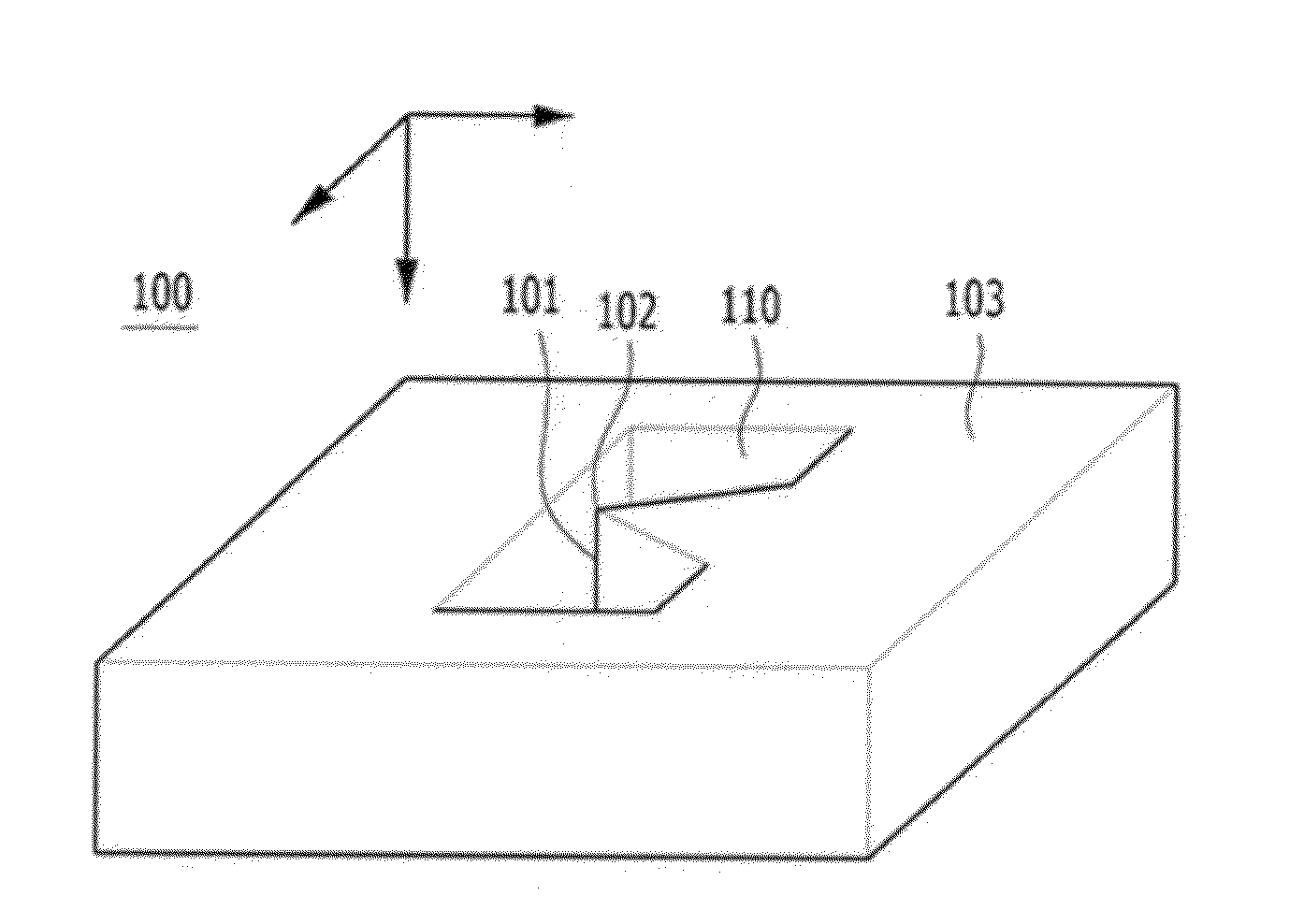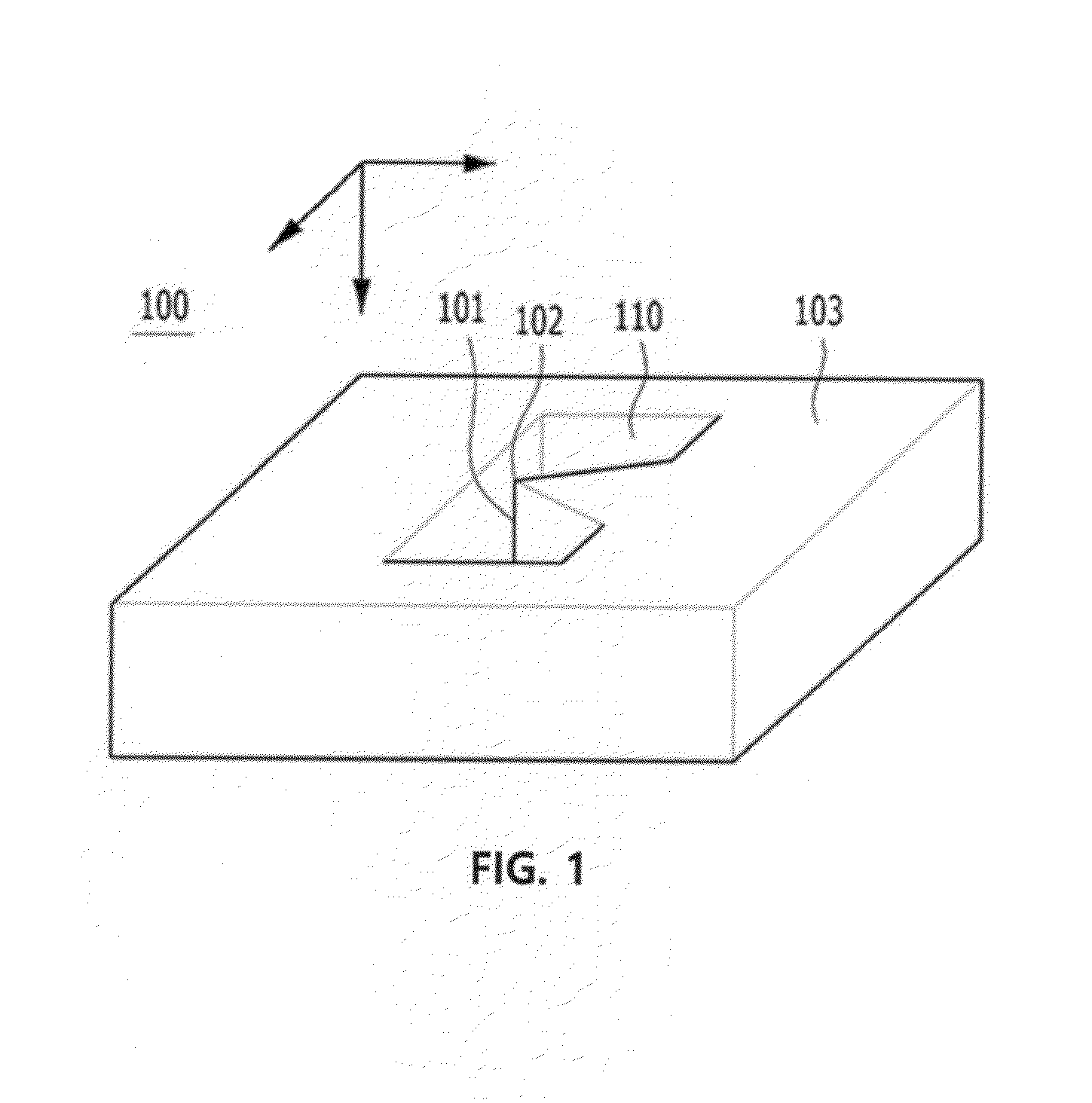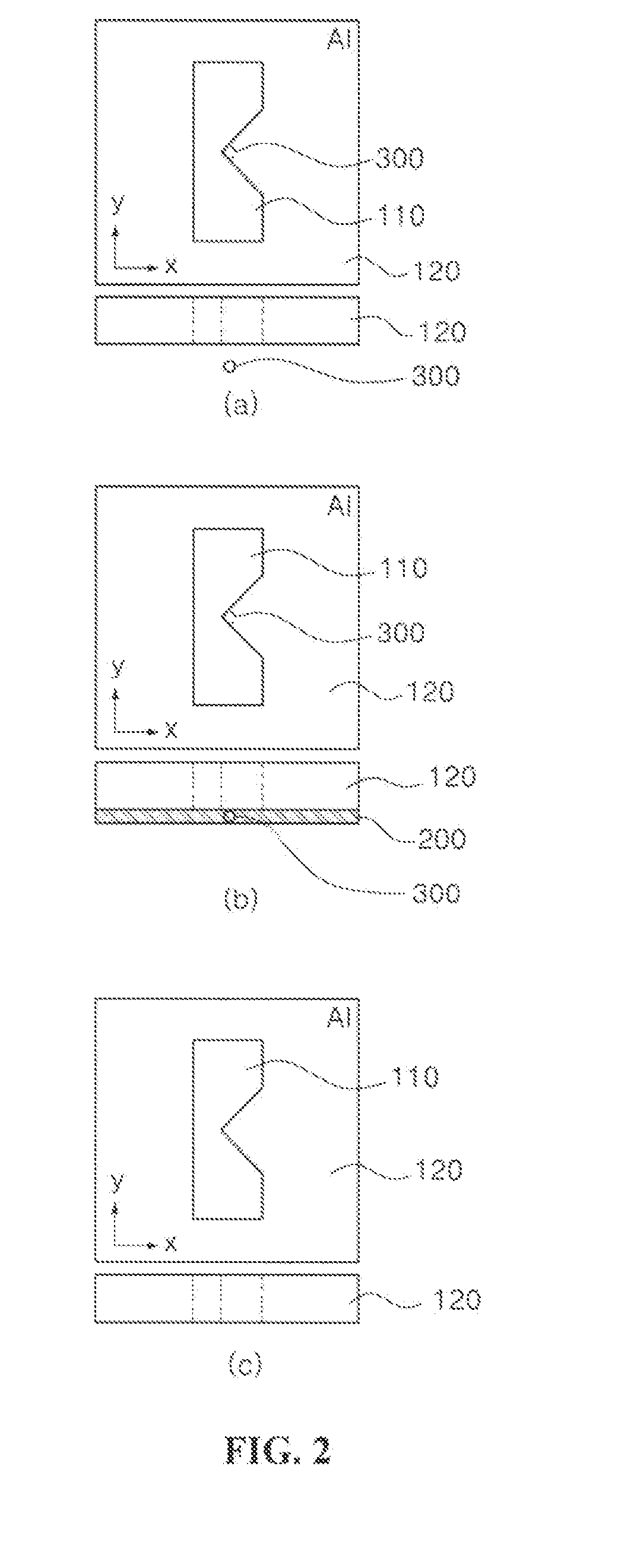Plasmonic optical waveguide using plasmonic coupling between nano-aperture and nano-particle
a plasmonic optical waveguide and nano-aperture technology, applied in the field of plasmonic optical waveguides, can solve the problems of difficult to obtain a few tens of nanometers, which is needed for a microscope, a semiconductor or the like, and the intensity of the output beam is low, and achieves a very small collected light compared with the incident light, and achieves a high optical amplification rate. , the effect of reducing the size of the collected ligh
- Summary
- Abstract
- Description
- Claims
- Application Information
AI Technical Summary
Benefits of technology
Problems solved by technology
Method used
Image
Examples
Embodiment Construction
[0032]Although the preferred embodiments of the present invention will be hereafter described in detail with reference to the accompanying drawings, the scope of the present invention is not limited thereto. Detailed description will be omitted for publicized configurations, and in addition, if a configuration may make the spirit of the present invention unclear, detailed description thereof will be omitted.
[0033]A plasmonic optical waveguide of the present invention is a module capable of amplifying an optical signal, which is a kind of electromagnetic wave, to have a high amplification rate compared with incident light and may be configured to include a nano-aperture 100 formed with an opening 110 of a nano-scale and a metal nano-particle. In addition, it may be configured to additionally include a dielectric layer 200 combined at the outlet side of the nano-aperture 100.
[0034]The nano-aperture 100 may be a kind of optical element. The nano-aperture 100 may form a light spot by us...
PUM
 Login to View More
Login to View More Abstract
Description
Claims
Application Information
 Login to View More
Login to View More - R&D
- Intellectual Property
- Life Sciences
- Materials
- Tech Scout
- Unparalleled Data Quality
- Higher Quality Content
- 60% Fewer Hallucinations
Browse by: Latest US Patents, China's latest patents, Technical Efficacy Thesaurus, Application Domain, Technology Topic, Popular Technical Reports.
© 2025 PatSnap. All rights reserved.Legal|Privacy policy|Modern Slavery Act Transparency Statement|Sitemap|About US| Contact US: help@patsnap.com



